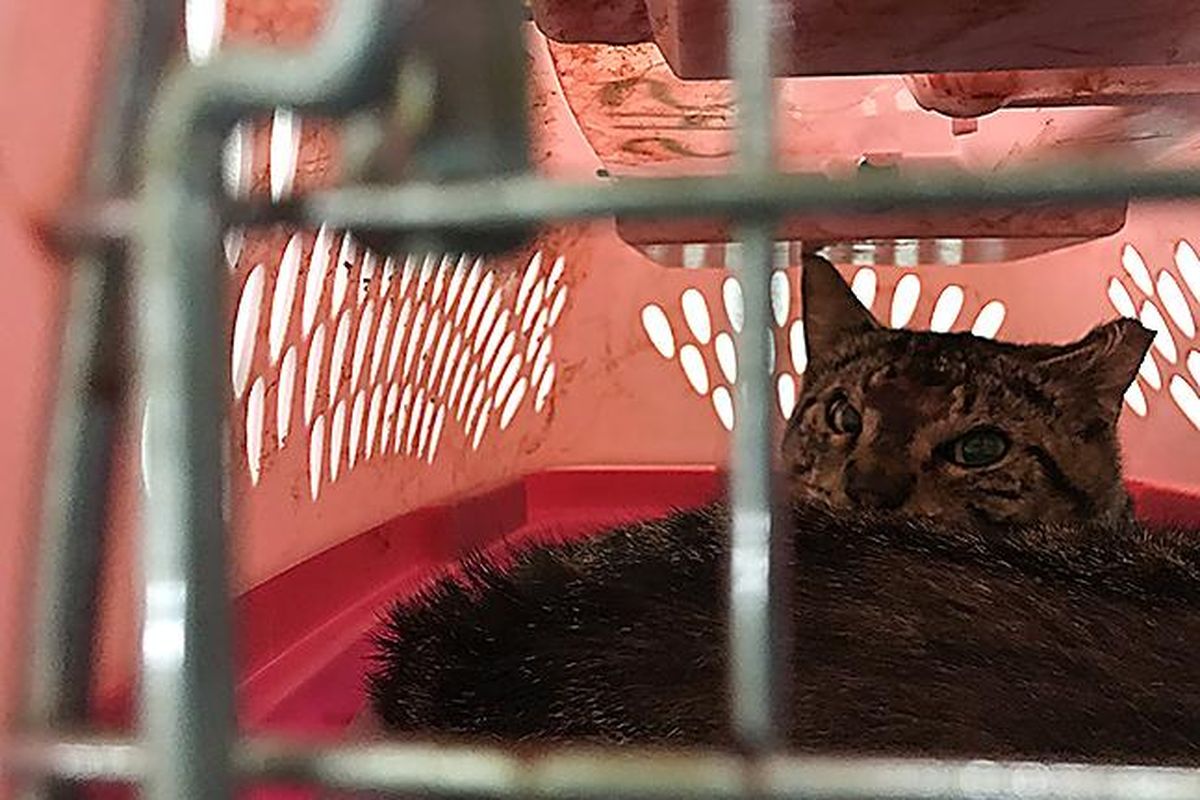Animal shelters team up to address Spokane’s feral cat population thanks to $50K ASPCA grant

Four local animal shelters have teamed up to trap, spay or neuter and adopt out feral cats in Spokane thanks to a $50,000 grant from the ASPCA that came from the estate of Spokane resident Yvonne Wolfer.
Last year the Spokane Humane Society, SpokAnimal, Higher Ground Animal Sanctuary and the Spokane County Regional Animal Protection Service came together to form the Washington Animal Welfare Alliance to take on the task.
“We can do more together as a coalition than we can do separately,” said Spokane Humane Society executive director Sheila Geraghty. “We’re all doing the same thing anyway, so why not work together.”
The first feral cat colony targeted was one that has set up shop at a city of Spokane water department facility at Hamilton Street and North Foothills Drive. The cats living there are being fed by a former employee, said SpokAnimal executive director Dori Peck.
“He worries about the them,” she said.
The cats have plenty of places to hide in the industrial complex that includes several buildings. The cats are generally active at night but people can see signs of their presence, Peck said. “ I’ve picked up kittens in the road almost every summer,” she said. “During the day you’re not going to see them.”
Peck said she’s made attempts at thinning the colony before and said the water department is desperate for help. “They’ve actually asked for help several times,” she said.
Peck and some volunteers set more than 20 traps at the site on Sunday and collected them Monday morning. Despite baiting the traps with enticingly smelly mackerel, only three cats were caught.
“Feral cats are super smart and super leery,” Peck said. “They’re really wild. No one has ever touched them for generations.”
There are an estimated 100 animals at the location, but the number fluctuates and no one knows for sure how many there are, Peck said. “You never know,” she said. “They move around. They have babies.”
The traps netted a large gray male, a small male tabby and a small black female. All were either spayed or neutered at the Spokane Humane Society and by the end of the day they were ready to be adopted out through SpokAnimal’s barn cat program.
People were already lining up to adopt the cats, said Human Society development director Pia Hallenberg. “The good news is we have three cats and homes for all three cats,” she said. “They’re all in really good shape.”
The coalition is looking for tips on the locations of other feral cat colonies, which can be emailed to
The plan is to trap cats at a different colony every month. Generally, the cats will not be returned to the colony after they are sterilized but will be adopted out as barn cats, Geraghty said.
“It will depend on the colony,” she said.
Peck said there’s no shortage of places to trap. “There’re so many places like this that people don’t realize,” she said.
People should not expect the cats to become tame pets, Geraghty said. They’re intended to be outdoor cats that provide rodent control, but they do need to be cared for.
“They do need to be fed,” she said. “They do need to have a safe, warm place to sleep.”
SpokAnimal’s barn cat program is a huge success that adopts out hundreds of cats every year, Peck said. “This gives them a chance to work and go on farms,” she said. “You can’t tame them down.”
The coalition plans to revisit the colony at the water department facility in an attempt to thin the herd. The site is slated to become a middle school in the future and there won’t be anywhere for the cats to live once construction begins.
Peck said she’s glad they were able to get a grant to allow the animal control groups to work together to address the feral cat issue.
“It helps us all afford to be able to do this,” she said. “Obviously there’s strength in numbers. It’s really a good thing for our community. It’s a cool program. We’re all excited about it.”